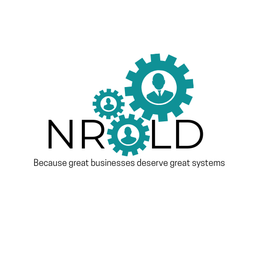How to Measure the ROI of Process Optimization: A Step-by-Step Guide
Knowing how to measure the Return on Investment (ROI) of your process optimization efforts is essential. It helps you justify your decisions, secure budgets for future projects, and understand what truly works for your company.

This guide will give you a simple, step-by-step framework to calculate your process improvement ROI, complete with clear examples.
Step 1: Define Your Goals and Scope Before You Begin
You cannot measure success if you don't know what success looks like. Before you change anything, you must clearly define the process you are targeting and what you hope to achieve. This first step sets the foundation for everything else.
What to do:
- Pinpoint the Process: Be specific. Instead of "improving marketing," focus on "reducing the time it takes to launch a new email campaign."
- Set Clear Goals: What is your main objective? Common goals include:
- Reducing Costs: Lowering the expense of a specific task.
- Saving Time: Decreasing the hours needed to complete a process.
- Improving Quality: Reducing errors or customer complaints.
- Increasing Output: Producing more in the same amount of time.
Example:
A company’s finance department wants to optimize its accounts payable process.
- Process: Processing and paying vendor invoices.
- Goal: To reduce the cost per invoice and decrease the average payment time from 15 days to 5 days. This will help them avoid late fees and capture early payment discounts.
Step 2: Map the "Before" Process and Collect Baseline Data
To show improvement, you need a starting point. This means you must measure how the process works right now, before you make any changes. This data is your baseline, and you will compare your new results against it.
What to do:
- Map the Current Process: Create a simple flowchart or a list of steps that shows how the process works today. Who does what, and in what order?
- Identify Key Performance Indicators (KPIs): Choose metrics that align with your goals from Step 1. These could be:
- Time: Average time to complete one cycle of the process.
- Cost: Labor cost, material cost, or software cost per task.
- Error Rate: The percentage of outcomes that have defects or require rework.
- Volume: The number of items processed per day, week, or month.
Example (Continuing with the Finance Department):
The team maps their current invoicing process: receive invoice, manually enter data, get manager approval via email, schedule payment, and file the paper invoice.
They collect the following baseline data over one month:
- Average Time to Pay: 15 days.
- Labor Cost: An employee spends 20 minutes per invoice. At an hourly rate of $30, the cost per invoice is $10.
- Error Rate: 5% of invoices have data entry errors, requiring an extra 10 minutes to fix ($5 extra cost).
- Volume: They process 500 invoices per month.
- Total Monthly Cost: (500 invoices * $10) + (25 invoices with errors * $5) = $5,000 + $125 = $5,125.
Step 3: Identify and Tally the Costs of Optimization
Every change has a cost. This is the "Investment" part of your ROI calculation. It's crucial to track all expenses related to the improvement project, both direct and indirect.
What to do:
- List Direct Costs: These are the obvious, out-of-pocket expenses.
- New software or technology.
- Fees for consultants or external experts.
- Training materials.
- List Indirect Costs: These are often related to time and resources.
- Employee time spent in training sessions.
- Time your internal team spends planning, implementing, and testing the new process. This is time they are not spending on their regular duties.
Example:
To optimize the process, the finance department decides to purchase accounts payable automation software.
- Direct Costs:
- Software subscription: $3,000 per year.
- One-time implementation fee: $1,000.
- Indirect Costs:
- Employee training: 2 employees * 8 hours each * $30/hour = $480.
- Project management time: 20 hours * $40/hour = $800.
Total First-Year Investment: $3,000 + $1,000 + $480 + $800 = $5280
Step 4: Implement the Changes and Collect "After" Data
Now it’s time to put your new process into action. After it has been running long enough to stabilize (usually a month or a quarter), you will measure its performance using the exact same KPIs you used in Step 2.
What to do:
- Roll Out the New Process: Implement the new software, train the team, and officially switch to the new way of working.
- Let It Run: Allow enough time for everyone to get used to the new process and work out any initial kinks.
- Measure Again: Collect data on the same KPIs: time, cost, error rate, and volume.
Example:
After implementing the automation software for three months, the finance team collects new data.
- Average Time to Pay: 4 days (Goal met!).
- Labor Cost: The software automates data entry. An employee now only spends 5 minutes per invoice on review and approval. The new cost is $2.50 per invoice.
- Error Rate: The software's OCR technology reduces the error rate to 1%.
- Volume: They still process 500 invoices per month.
- New Monthly Cost: (500 invoices * $2.50) + (5 invoices with errors * $5) = $1,250 + $25 = $1,275.
Step 5: Calculate the Financial Gain (The "Return")
This is where you translate your operational improvements into hard numbers. The financial gain, or "Return," is the value you created from the optimization.
What to do:
- Calculate Cost Savings: This is the most direct benefit. Compare the old cost to the new cost.
- Calculate Productivity Gains: If time was saved, you can quantify it. (Time Saved per Task) x (Number of Tasks) x (Employee Cost per Hour). This time can now be used for more valuable work.
- Account for New Revenue: Sometimes, optimization can lead to more sales or better customer retention. For example, a faster sales process can close more deals.
Example:
Let's calculate the finance department's monthly financial gain.
- Old Monthly Cost: $5,125
- New Monthly Cost: $1,275
Monthly Savings:
$5,125 - $1,275=$3,850
Annual Savings:
3,850∗12= 46,200. This is the annual financial gain.
Step 6: Calculate the Final ROI
You have the "Investment" from Step 3 and the "Return" from Step 5. Now, you can put it all together using the standard ROI formula.
The ROI Formula:
ROI (%) = (Financial Gain - Cost of Investment) / Cost of Investment * 100
What to do:
- Plug in Your Numbers: Insert your financial gain and total investment cost into the formula.
- Calculate the Result: The resulting percentage shows how much value you received for every dollar you invested.
Example:
Let's calculate the first-year ROI for the finance department's project.
- Financial Gain (Annual): $46,200
- Cost of Investment (First Year): $5,280
- ROI Calculation:
- ($46,200 - $5,280) / $5,280
- $40,920 / $5,280 = 7.75
- 7.75 * 100 = 775%
A 775% ROI is an outstanding result. It proves that the investment in automation software was an excellent financial decision.
Don't Forget Intangible Benefits
Not all benefits fit neatly into a spreadsheet. These are called intangible benefits, and they are also important for understanding the full impact of your process optimization. While they don't go into the ROI formula, you should always report them alongside it.
Examples of intangible benefits include:
- Improved Employee Morale: Automating tedious tasks can make employees happier and more engaged.
- Enhanced Customer Satisfaction: Faster service or fewer errors lead to more loyal customers.
- Better Brand Reputation: Being known as an efficient and reliable company is a powerful asset.
- Increased Agility: Streamlined processes allow your business to adapt more quickly to market changes.
This data-driven approach allows you to celebrate your wins, learn from your efforts, and make smarter investment decisions in the future. Start with one small process, follow this guide, and see for yourself how powerful proving your ROI can be.

This content is AI-assisted and reviewed for accuracy, but errors may occur. Always consult a legal/financial professional before making business decisions. nrold.com is not liable for any actions taken based on this information.


